It’s not easy to understand an engine for everyone. There are a lot of parts, and each and every one of them plays a role. And the rich or lean adjustment setting is done by the carburetor inside. So, how can you do Johnson Outboard Rich Lean Adjustment?
To do the rich or lean adjustment, you need to work on the carburetor. Keep the engine running on idle and then take the engine cover off. Locate the carburetor and find the two screws which adjust the fuel and airflow. Adjust each screw according to the best air and fuel ratio for your engine.
That was a quick look. But wait! You are missing out on a lot of details if you leave now. Below we have given all the details you need to get the perfect fuel and air ratio. So, let’s begin!
Table of Contents
ToggleSigns That a Johnson Outboard Engine’s Fuel Mixture Needs to Be Adjusted
Here are some common signs that indicate a Johnson Outboard engine’s fuel mixture may need to be adjusted:
- Decreased performance: If you notice a decrease in the engine’s power or acceleration, it may be due to a lean fuel mixture, which can lead to a lack of fuel to the engine.
- Rough idling: An engine that is idling roughly or stalling frequently can be a sign of a lean or rich fuel mixture.
- Difficulty starting: A fuel mixture that is too rich can make it difficult for the engine to start, as there may be too much fuel and not enough air in the carburetor.
- Engine surging: If the engine is surging or running erratically, it may be due to an incorrect fuel mixture that is causing fluctuations in the engine’s RPM.
- Poor fuel economy: If you’re noticing that you’re using more fuel than usual, it may be due to a rich fuel mixture, which can cause the engine to burn fuel inefficiently.
- Black smoke from the exhaust: Excessive black smoke from the exhaust can be a sign of a rich fuel mixture, as there is more fuel being burned than necessary.
- Engine overheating: If the engine is overheating, it may be due to a lean fuel mixture, which can cause the engine to run hotter than normal.
If you’re experiencing any of these symptoms, it’s important to have the fuel mixture checked and adjusted as necessary to ensure optimal performance and prevent damage to the engine.
Difference Between Rich and Lean Fuel Mixture
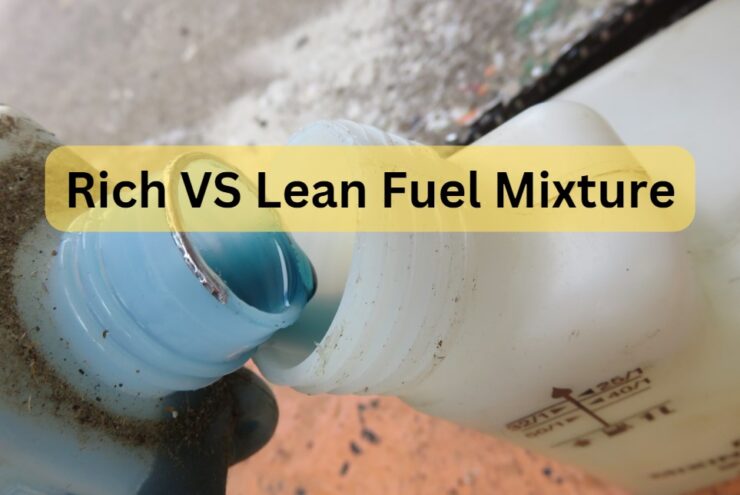
The terms “rich” and “lean” are used to describe the air/fuel mixture that is supplied to an internal combustion engine. A fuel mixture is considered “rich” if it contains a higher ratio of fuel to air. On the other hand, a fuel mixture is considered “lean” if it contains a lower ratio of fuel to air.
You can tell if a Johnson Outboard engine’s fuel mixture is too rich or too lean by observing the engine’s performance and analyzing the symptoms it is exhibiting. Here are some of the signs that indicate a rich or lean fuel mixture:
Rich Fuel Mixture
When the fuel mixture in an internal combustion engine is too rich, it can lead to several symptoms, including:
- Poor fuel economy: The excess fuel in the rich mixture leads to increased fuel consumption and decreased fuel efficiency.
- Engine hesitation: A rich mixture can cause a delay in the engine’s throttle response, leading to hesitation or stuttering when accelerating.
- Rough idling: The engine may idle roughly or stall when at a stop due to the excess fuel in the mixture.
- Increased emissions: A rich mixture can result in increased emissions of hydrocarbons (unburned fuel) and carbon monoxide, which can harm the environment and air quality.
- Engine misfire: The rich mixture can cause an engine misfire, leading to a loss of power and an uneven running engine.
- Fouled spark plugs: The excess fuel can cause the spark plugs to become fouled, which can lead to decreased engine performance and misfires.
Lean Fuel Mixture
A lean fuel mixture in an internal combustion engine can produce a range of symptoms:
- Reduced engine power: A lean mixture can result in a loss of power and decreased acceleration performance.
- Engine stumbling: The engine may stumble or hesitate during acceleration, or experience a loss of power.
- The engine knock: A lean mixture can result in an engine knock or ping, which is a knocking or rattling sound coming from the engine.
- Overheating: A lean mixture can cause increased combustion temperatures, which can lead to engine overheating.
- Decreased fuel economy: A lean mixture can reduce fuel efficiency, leading to decreased fuel economy.
- Backfiring: A lean mixture can cause backfiring through the intake or exhaust, which can be accompanied by a loud popping sound.
- Engine damage: In extreme cases, a lean mixture can cause long-term damage to the engine, such as melted pistons or a damaged catalytic converter.
It’s important to diagnose and correct a rich fuel mixture promptly, as it can lead to decreased engine performance and potentially cause long-term damage to the engine and its components. A professional mechanic should be consulted to diagnose and repair a rich fuel mixture issue.
How Can You Adjust the Rich And Lean Fuel Adjustments?
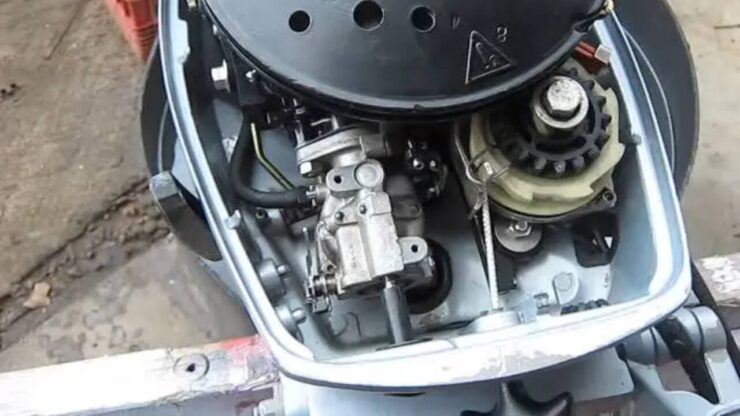
The engine is the heart of any vehicle. And the fuel is kind of like the blood in our body. Without the fuel, you cannot use the engine. And you cannot move anywhere.
But that doesn’t mean the fuel needs a straight flow of fuel. You have to adjust the right level of fuel to make sure efficiency. Too much or too less both scenarios are not good for your engine. When the fuel goes to the engine, it mixes with oxygen, which creates combustion.
So, you have to make sure the flow of fuel is appropriate with the flow of oxygen. This way the engine gets the best power. Also, it will use an efficient level of fuel.
The part which delivers the fuel with a mixture of air is the carburetor. And to fix the efficiency level of the engine you have to work on this carburetor.
And there is too much flow of the fuel, it is known to be rich. But when the engine is getting more power air than fuel, that is known as lean. And you need to get the perfect ratio of both by adjusting the screws.
Below you will see that we have divided the complete process in 5 easy steps. So, go through the steps below, cause not all engines are the same. The Yamaha 40 hp 4 stroke engine problems won’t match the johnson outboard engine problems. So, so let’s get started.
Step 1: Warm Up the Motor
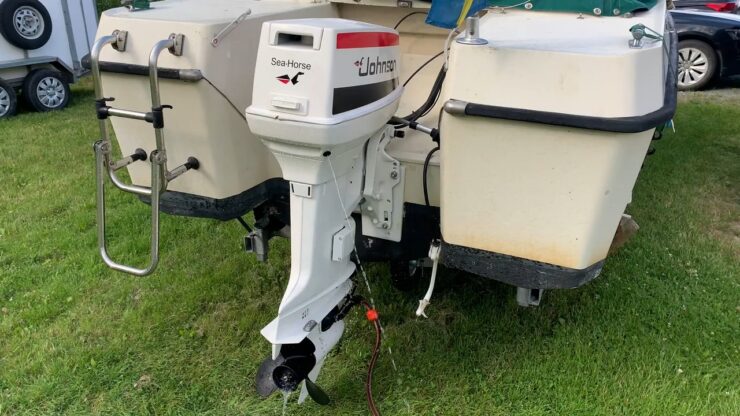
Before you even start working on the engine, you have to warm up the engine. That means you need to run the engine for 12 to 15 minutes to get the oil flowing. You need to keep the engine idle.
When the engine states idle, the oil doesn’t flow from the tank to the engine. So, at that stage, you cannot make sure how much fuel is flowing. That is why you need to start the engine to see how much oil it’s taking in.
Step 2: Take the Engine Cowling Off
Now that the engine is running, let’s start working on the adjustments. Firstly, take the engine cowling off. The engine cowling is the part that covers the engine.
There are latches that keep the cowling in place. Although, the placement of the latches can be different depending on the model. So, take a look in the owner manual to see where the latches actually are.
Since the engine is running, you can see a lot of moving parts. You have to be really careful. Because if any part of what you are wearing gets stuck, the engine can rip it off. So, make sure you are not wearing anything which gets pulled by the engine.
Step 3: Locate the Engine Carburetor
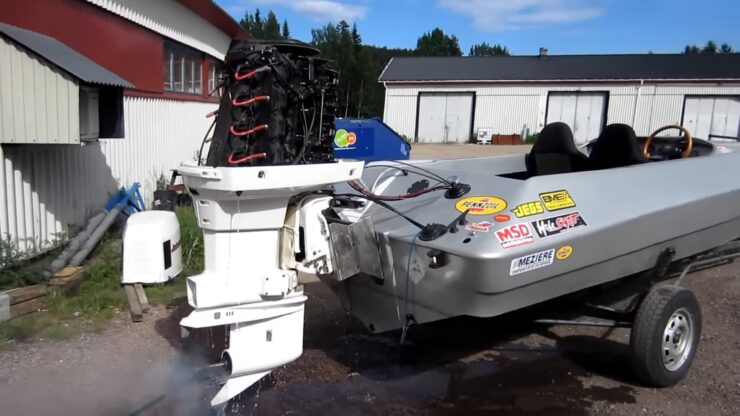
So, the running engine is exposed. Now you have to locate the carburetor in the engine. The job of the carburetor is to mix fuel with air. And also, the carburetor can adjust the flow of both the air and the fuel. The carburetor usually sits on the side of the engine pistons. So it sends the engine the mixture of fuel and oil.
Also, for the next step, you need all sorts of screwdrivers. So make sure you have one. If you don’t check the links below. Both of these screwdriver sets are perfect to do all kinds of work on your engine.
Now, you can adjust how much oil the carburetor mixes with the air. And depending on the mixing ratio, the engine will perform. Not too much of both is good for the engine.
Step 4: Turn the Screws to Adjust the Fuel Flow
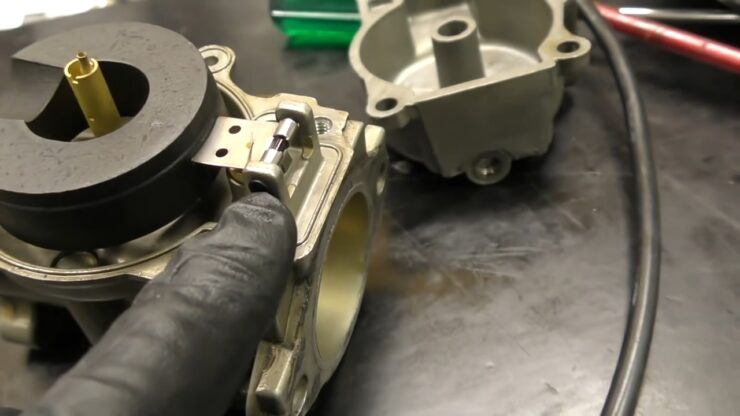
There are 3 valves in the carburetor. Two are for fuel and one is for the air. With these valves, the carburetor provides fuel and air mixture to the engine. Now, the ratio of fuel and air has to be perfect. And that way you can make sure your engine is running at the most optimal level. Also, the driving experience will be smoother.
So, there are 3 screws with which you can control the valves. Each screw is responsible for each valve. You can see the screws turn when you press down on the accelerator. At that moment all the valves gradually open and let oil and air pass.
So, at that moment all the valves need open or close at the same pace. If any of the valves close or open late or too soon, it can cause a rough drive. Cause when there is less throttle the engine might shake when staying idle.
When the engine is in idle mode, it uses a gentle stream of oil. In idle mode, the engine is designed to be as efficient as possible. That is why we suggest you configure the valve screws. Through these adjustments, you can set the valves at the right pace.
We suggest you look for the perfect ratio for your engine. Cause not all engines are the same. Some require more fuel some may require less. That is why you need to adjust according to your engine.
After you finish with the adjustments, make sure to clean the carburetor. Usually, it oozes out excess oil when the gaskets are not tightened enough.
Step 5: Put the Engine Back Together
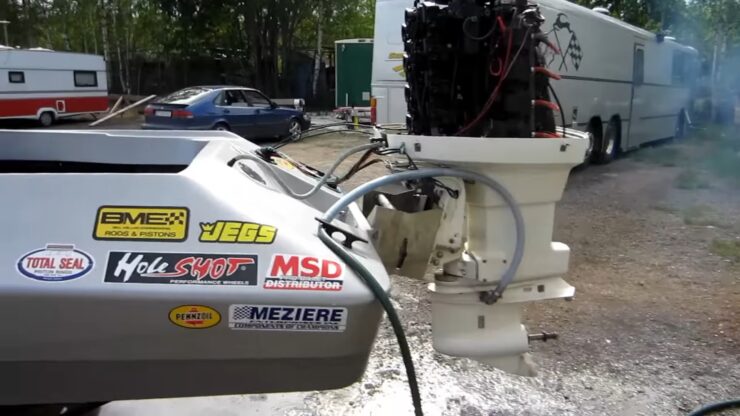
After adjusting the valves on the carburetor you say you go for a run with it. Try the new adjustment out. This way you’ll know all the things are right. But do remember to place everything where it was. Cover the engine with the cowling and attach all the latches. Otherwise, water can go inside when you are out in the river.
What is the Most Efficient Fuel Adjustment
In general, the most fuel efficiency adjustment you can do depends on the engine. Cause as we said, not all engines are the same. Not all use the same ratio of air and fuel. So the adjustment differs from engine to engine.
To know about the best adjustment for your engine, take a look at the owner’s manual. You might also need to adjust the throttle cable with the carburetor. It can make some minor differences as well. However, it might be difficult if the throttle cable has already some issues.
FAQs
Does the 2-stroke Engine Consume More Fuel Than 4-stroke?
The 2-stroke engine does consume more fuel than a 4-stroke engine. One of the main reasons for that is the oil circulates more in the 2-stroke engine. That is why lubricates are added with fuel in a 2-stroke engine motor.
How Can You Tell if an Engine is Lean or Rich?
You can tell an engine is lean or rich by the sound of the engine. If the engine is a lot of noise and sputtering. But when the engine is set to lean, you can see the engine is not getting enough power.
Why Does the Engine Vibrate When It’s Idle?
Your engine vibrates when sitting idle may be because the engine mounts are broken. When the mounts are broken the vibration will carry from the engine to the whole body. It can also be caused by a weak engine mount.
How Often Should You Adjust the Fuel Mixture on a Johnson Outboard Engine?
It’s recommended to check the fuel mixture every 100 hours of use or at least once a year, even if the engine is not being used regularly. It’s also important to check the fuel mixture whenever you notice any changes in the engine’s performance, such as a decrease in power, rough idling, or difficulty starting.
Endnote
So, that was everything you needed to know about Johnson Outboard Rich Lean Adjustment. Using the engine in the correct fuel-to-air ratio will give you more fuel efficiency. Also, it can get more balanced power.
Keep in mind that adjusting the fuel mixture on a Johnson Outboard engine can be a complex and delicate task, so it’s important to follow the manufacturer’s guidelines and have a basic understanding of the engine’s carburetor and fuel system before attempting to make any adjustments. If you’re unsure of how to properly adjust the fuel mixture, it’s best to consult a professional mechanic or the manufacturer’s customer service.
I’m Liam Jackson, the proud owner and driving force behind KayakPaddling.net. Born somewhere in the expansive beauty of the United States, I’ve nurtured a lifelong passion for kayaking and fishing that has led me to explore the far corners of our nation’s waterways.
Related Posts:
- Heavy Duty Fishing: 11 Best Rods And Reels For Big Fish 2024
- 16 Best Kayak For Beginners 2024 - Kayaking Adventure Gear
- 10 Best Saltwater Fishing Boats - Ultimate Angling Adventure
- 10 Best Inflatable Kayak 2024 - Rivers, Lakes & Open Seas
- 12 Best Kayak GPS 2024 - Find Your Way to Adventure
- 12 Best Truck Bed Hitch Extenders for Kayak 2024 -…












